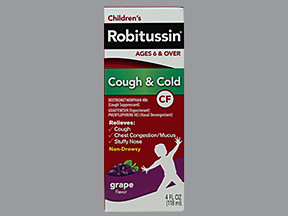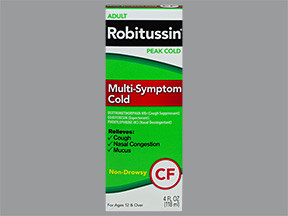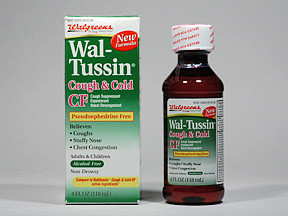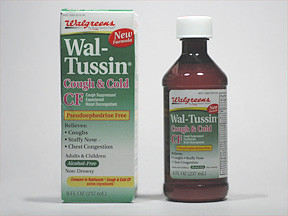GUAIFENESIN/DEXTROMETHORPHAN/DECONGESTANT - ORAL
PHONETIC PRONUNCIATION:
COMMON BRAND NAME(S): Aquanaz
GENERIC NAME(S): guaifenesin/dextromethorphan HBr/phenylephrine
Uses
USES: This combination medication is used to temporarily treat cough, chest congestion, and stuffy nose symptoms caused by the common cold, flu, allergies, hay fever, or other breathing illnesses (e.g., sinusitis, bronchitis). Guaifenesin is an expectorant that helps to thin and loosen mucus in the lungs, making it easier to cough up the mucus. Dextromethorphan is a cough suppressant that affects a certain part of the brain (cough center), reducing the urge to cough. This product also contains a decongestant, which helps relieve stuffy nose symptoms. This medication is usually not used for ongoing coughs from smoking, asthma, other long-term breathing problems (e.g., emphysema), or coughs with a lot of mucus, unless directed by your doctor. Cough-and-cold products have not been shown to be safe or effective in children younger than 6 years. Therefore, do not use this product to treat cold symptoms in children younger than 6 years unless specifically directed by the doctor. Some products (such as long-acting tablets/capsules) are not recommended for use in children younger than 12 years. Ask your doctor or pharmacist for more details about using your product safely. These products do not cure or shorten the length of the common cold and may cause serious side effects. To decrease the risk for serious side effects, carefully follow all dosage directions. Do not use this product to make a child sleepy. Do not give other cough-and-cold medication that might contain the same or similar ingredients (see also Drug Interactions section). Ask the doctor or pharmacist about other ways to relieve cough and cold symptoms (such as drinking enough fluids, using a humidifier or saline nose drops/spray).
How to use GUAIFENESIN/DEXTROMETHORPHAN/DECONGESTANT - ORAL
HOW TO USE: If you are taking the over-the-counter product, read all directions on the product package before taking this medication. If you have any questions, consult your pharmacist. If your doctor has prescribed this medication, take it as directed. Take the tablet, capsule, or liquid form by mouth with or without food. Follow the directions for dosing on the label, or take as directed by your doctor. Drink plenty of fluids when you use this medication unless otherwise directed by your doctor. The fluid will help loosen the mucus in your lungs. This medication can be taken with food if stomach upset occurs. If you are using the liquid form, use a medication measuring device to carefully measure the prescribed dose. Do not use a household spoon. If your liquid form is a suspension, shake the bottle well before each dose. If you are using sustained-release tablets or capsules, swallow the medication whole. Do not crush or chew the tablets or capsules. Doing so can destroy the long action of the drug and may increase side effects. The dosage is based on your age, medical condition, and response to therapy. Improper use of this medication (abuse) may result in serious harm (e.g., brain damage, seizure, death). Do not increase your dose or take this medication more often than recommended by your doctor or the package instructions without your doctor's approval. Inform your doctor if your condition persists for more than 1 week, if it worsens, or if it occurs with fever, rash, or persistent headache. These may be symptoms of a serious medical problem and should be checked by a doctor.
Side Effects
Precautions
Interactions
Overdose
Images
Reviews
Faq for GUAIFENESIN/DEXTROMETHORPHAN/DECONGESTANT - ORAL
Guaifenesin/dextromethorphan/decongestant is a combination medication that is used to relieve symptoms of cough, congestion, and mucus production.
Guaifenesin helps to loosen and thin mucus in the airways, making it easier to cough up. Dextromethorphan is a cough suppressant that helps to reduce coughing. Decongestants work by narrowing the blood vessels in the nasal passages, relieving congestion.
This medication is commonly used to relieve symptoms associated with the common cold, flu, sinusitis, bronchitis, and other respiratory conditions.
Common side effects may include dizziness, drowsiness, nausea, headache, and dry mouth. These side effects are usually mild and go away on their own.
Yes, guaifenesin/dextromethorphan/decongestant is commonly used in children aged 4 years and older. However, it is important to follow the dosing instructions based on the child's age and weight and consult a healthcare provider.
It is important to consult a healthcare provider or pharmacist before taking this medication with other medications. Some drugs may interact with guaifenesin/dextromethorphan/decongestant and cause unwanted side effects.
The onset of action varies from person to person, but most people start experiencing relief within 30 minutes to 1 hour after taking the medication.
It is important to consult a healthcare provider before using this medication during pregnancy or breastfeeding. They can assess the potential risks and benefits and provide appropriate guidance.
It is generally advisable to avoid alcohol while taking this medication, as it can increase the risk of side effects such as drowsiness and dizziness.
Disclaimer
IMPORTANT: HOW TO USE THIS INFORMATION: This is a summary and does NOT have all possible information about this product. This information does not assure that this product is safe, effective, or appropriate for you. This information is not individual medical advice and does not substitute for the advice of your health care professional. Always ask your health care professional for complete information about this product and your specific health needs.





No Reviews Yet